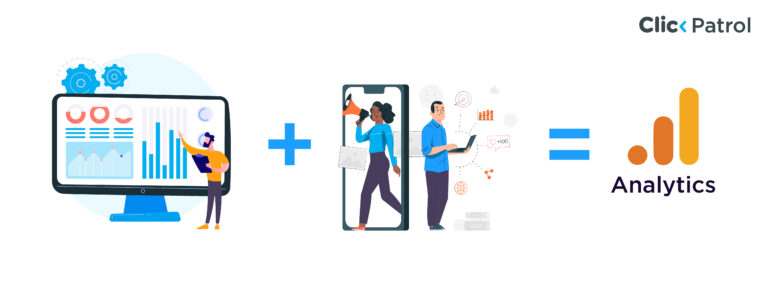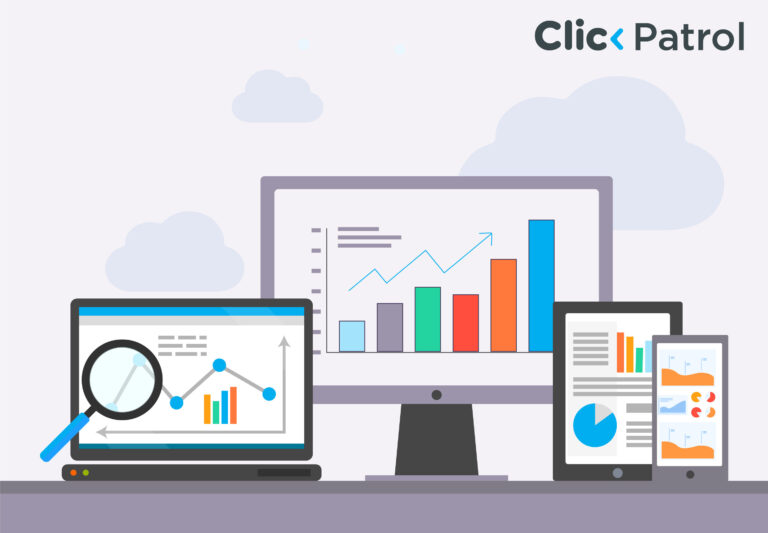
Mastering target CPA in Google Ads: Boost conversions with smarter bidding strategies
Abisola Tanzako | May 25, 2025

Table of Contents
- What is target CPA in Google Ads, and how does it work?
- How does target CPA work?
- Signal-based decision making:
- Real-time bidding with smart predictions
- Key characteristics of target CPA
- Benefits of using target CPA
- When to use target CPA bidding: Is it right for your campaign?
- Setting up the target CPA in Google Ads
- Optimizing target CPA campaigns
- Best practices for target CPA
- Mastering target CPA for smarter advertising
- FAQs
Smart bidding strategies, such as Target CPA, can increase conversion rates by up to 25% .
In the dynamic world of digital advertising, achieving optimal returns on investment (ROI) is paramount. One strategy that has gained prominence for its efficiency and effectiveness is Target CPA (Cost Per Acquisition) bidding in Google Ads.
This guide explains Target CPA’s benefits, potential challenges, setup steps, and optimization strategies.
What is target CPA in Google Ads, and how does it work?
Target CPA is a Smart Bidding strategy in Google Ads that automatically sets bids to help advertisers get as many conversions as possible at or below a specified cost per acquisition.
Instead of manually adjusting bids for each keyword or ad group, Google Ads uses historical data and contextual signals to predict which clicks will likely lead to conversions and adjust bids accordingly.
For instance, if you set a Target CPA of $50, Google Ads will aim to get as many conversions as possible at an average cost of $50.
How does target CPA work?
Target CPA (Cost Per Acquisition) is a smart bidding strategy within platforms like Google Ads, designed to help advertisers get as many conversions as possible at or below a defined cost per action. But how does it work behind the scenes?
Signal-based decision making:
Every time someone searches and your ad enters the auction, Google evaluates real-time contextual signals to determine the likelihood that the click will result in a conversion. Here are some of the key signals it considers:
- Device: Whether the user is browsing on a mobile phone, tablet, or desktop.
- Location: The geographic region where the search occurs (e.g., country, city, neighborhood).
- Time of day or day of the week: Certain times or days might produce better conversion rates.
- Browser: Chrome, Safari, Firefox; some browsers may indicate user preferences or tech savviness.
- Language settings: Helps serve more relevant ads in the user’s preferred language.
- Remarketing list status: Whether the user has previously interacted with your brand.
- Search query context: The exact words or phrases used and their commercial intent.
Real-time bidding with smart predictions
Once these signals are processed, Google’s algorithm estimates the probability that a specific user will convert and adjusts your bid accordingly in milliseconds. If the system believes there is a high chance of conversion, it may bid more aggressively, within budget limits. If not, it bids conservatively or skips the auction.
Key characteristics of target CPA
- Automated bidding: It removes the manual guesswork of setting individual keyword bids. Once your target CPA is defined, the system takes over.
- Real-time adjustments: Unlike static bid strategies, Target CPA operates dynamically, evaluating each auction as a unique opportunity based on up-to-the-moment data.
- Machine learning optimization: Over time, the algorithm learns from previous conversions and better predicts what leads to successful outcomes.
- Conversion tracking is required: To work effectively, you must set up conversion tracking correctly. Without it, the system lacks the data to make informed bid decisions.
Benefits of using target CPA
Target CPA (Cost Per Acquisition) isn’t just a convenience—it’s a performance-enhancing tool designed to help advertisers get the most value from their ad spend. Below are the key benefits in more detail:
1. Efficiency and time-saving: Adjusting bids across hundreds or even thousands of keywords is time-consuming and error-prone. With Target CPA, bidding is automated, allowing marketers to focus on strategy, audience targeting, and creative messaging, which truly move the needle.
2. Optimized performance: At the heart of Target CPA lies machine learning, which continuously gathers data on your audience, conversions, and user behavior. Over time, it becomes more accurate in predicting:
- Which users are most likely to convert
- What bid amount is most efficient for each auction
- How to allocate budget across high-performing segments
3. Better budget control: One of the biggest challenges in PPC advertising is balancing cost control and maintaining results. Target CPA helps manage your budget effectively by striving to keep the average cost per conversion at or below your target.
4. Scalability: The machine learning algorithm becomes more precise as your campaign matures and accumulates more conversion data. This improved accuracy enables easier campaign scaling while maintaining efficiency.
When to use target CPA bidding: Is it right for your campaign?
Although Target CPA is a powerful tool, it’s unsuitable for every situation. Knowing when to activate this strategy can mean the difference between success and struggle.
1. You have sufficient conversion data: Google recommends that your campaign have at least 15 conversions in the last 30 days, though 30+ is ideal. This volume of data provides the algorithm with sufficient information to optimize bids accurately.
2. Your campaign has clear conversion goals: Target CPA is all about cost-per-action optimization, so it works best when your primary objective is to drive a specific type of conversion, such as:
- Form submissions
- Product purchases
- App installs
- Newsletter signups
4. You want predictable CPA outcomes: One of the key benefits of this strategy is its predictability. If you are a performance marketer working within strict CPA goals or managing a fixed budget, Target CPA can deliver more reliable performance across large campaigns. It is particularly valuable for:
- E-commerce stores with set profit margins
- Lead-gen businesses managing the cost per lead
- SaaS products running paid trials or demos
- Potential drawbacks and considerations
While Target CPA offers numerous benefits, it’s essential to be aware of potential challenges:
- Loss of control: Automated bidding means relinquishing manual control over individual keyword bids, which might not suit all advertisers.
- Learning period: The algorithm requires a learning phase to gather data and optimize its performance effectively, during which its performance may fluctuate.
- Not ideal for all campaigns: Campaigns with low conversion volumes or those in highly competitive markets might not see immediate benefits.
- Over-reliance on historical data: The strategy’s heavy reliance on past data can impact its effectiveness. Significant changes in market conditions or user behavior can impact the strategy’s effectiveness.
Setting up the target CPA in Google Ads
Implementing Target CPA involves several steps:
- Enable conversion tracking: Ensure that conversion tracking is set up correctly to provide the necessary data for optimization.
- Select the campaign: Navigate to the desired campaign in your Google Ads account.
- Access bidding settings: Locate the “Bidding” section within the campaign settings.
- Choose target CPA: Select “Target CPA” as your bidding strategy.
- Set your target CPA: Input the desired cost per acquisition based on historical data and business goals.
- Save and monitor: Save the settings and monitor the campaign’s performance, making adjustments as necessary.
Optimizing target CPA campaigns
To maximize the effectiveness of Target CPA, consider the following optimization strategies:
- Set realistic CPA targets: Base your target CPA on historical performance and profit margins. Setting unrealistic targets can hinder performance.
- Allow for a learning period: Give the algorithm time to gather data and adjust bids effectively. Avoid making frequent changes during this phase.
- Monitor performance metrics: To assess performance, regularly review key metrics such as conversion rate, cost per conversion, and overall ROI.
- Adjust for seasonality: Be mindful of seasonal trends and adjust your target CPA to maintain performance during peak periods.
- Segment campaigns: Consider segmenting campaigns by device, location, or audience to gain more control and insights.
Best practices for target CPA
Implementing best practices can enhance the performance of your Target CPA campaigns:
- Regular reviews: Continuously monitor and adjust campaigns based on performance data.
- A/B resting: Test different ad creatives and landing pages to identify what drives the best results.
- Negative keywords: Use negative keywords to prevent irrelevant traffic and reduce wasted spend.
- Quality score improvement: Enhance ad relevance and landing page experience to improve Quality Scores, which can positively impact CPA.
Mastering target CPA for smarter advertising
Target CPA is a powerful tool in Google Ads’ arsenal. It provides automated bidding to help advertisers efficiently achieve their conversion goals.
By understanding its mechanics, benefits, and best practices, businesses can effectively leverage Target CPA to optimize their advertising efforts, reduce costs, and enhance their return on investment (ROI).
As with any strategy, continuous monitoring and adjustments are key to sustained success.
FAQs
Q. 1 How do I set the right Target CPA?
Start by calculating how much you’re willing to pay for a single conversion while still making a profit. Review your past performance data, including average conversion and customer lifetime values. Begin conservatively and adjust based on performance.
Q. 2 Can I use Target CPA if I do not have many conversions?
Google recommends at least 15–30 conversions in the past 30 days for Target CPA to work effectively. If your campaign is new or lacks sufficient data, consider starting with Maximize Conversions bidding to gather the necessary historical data.

